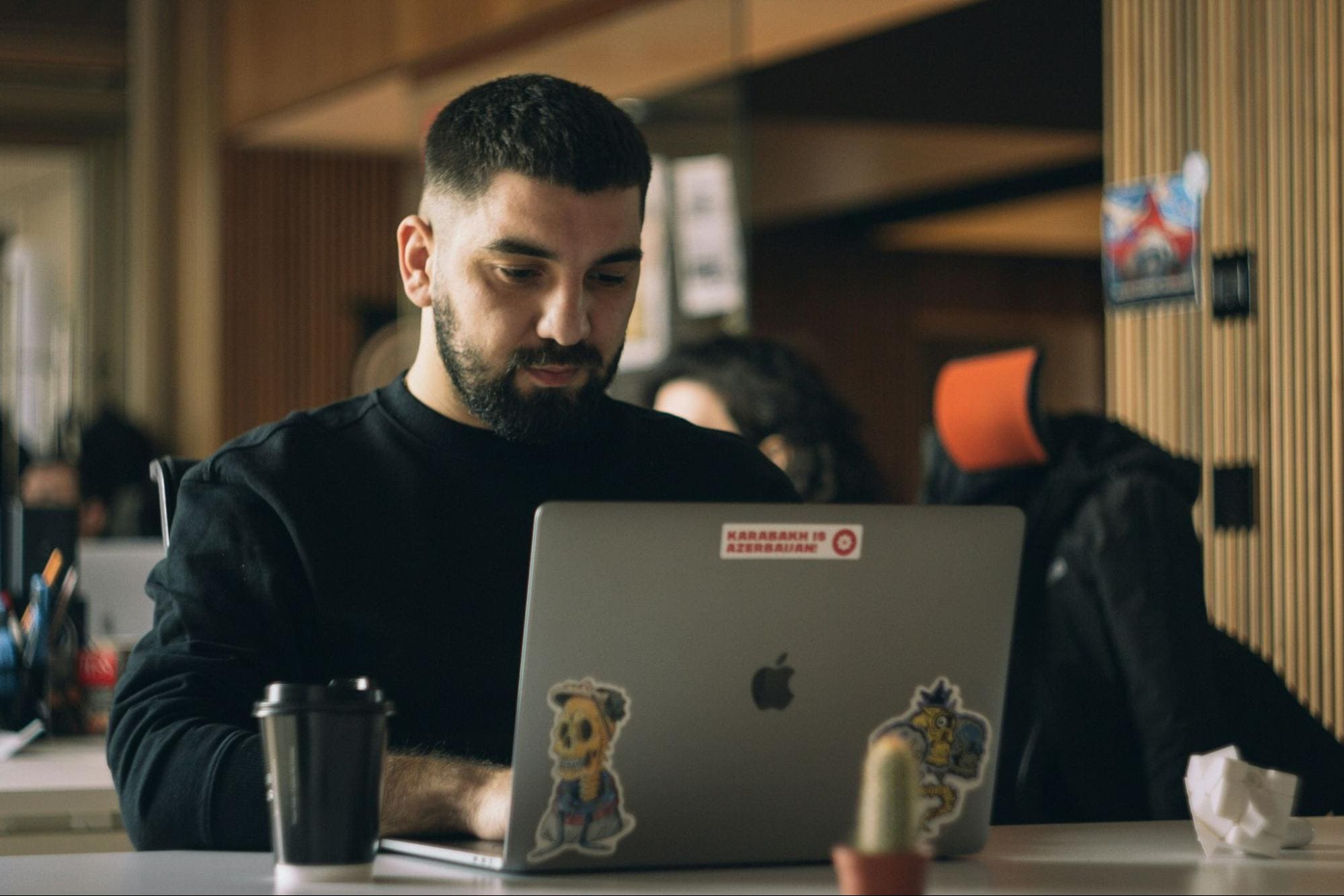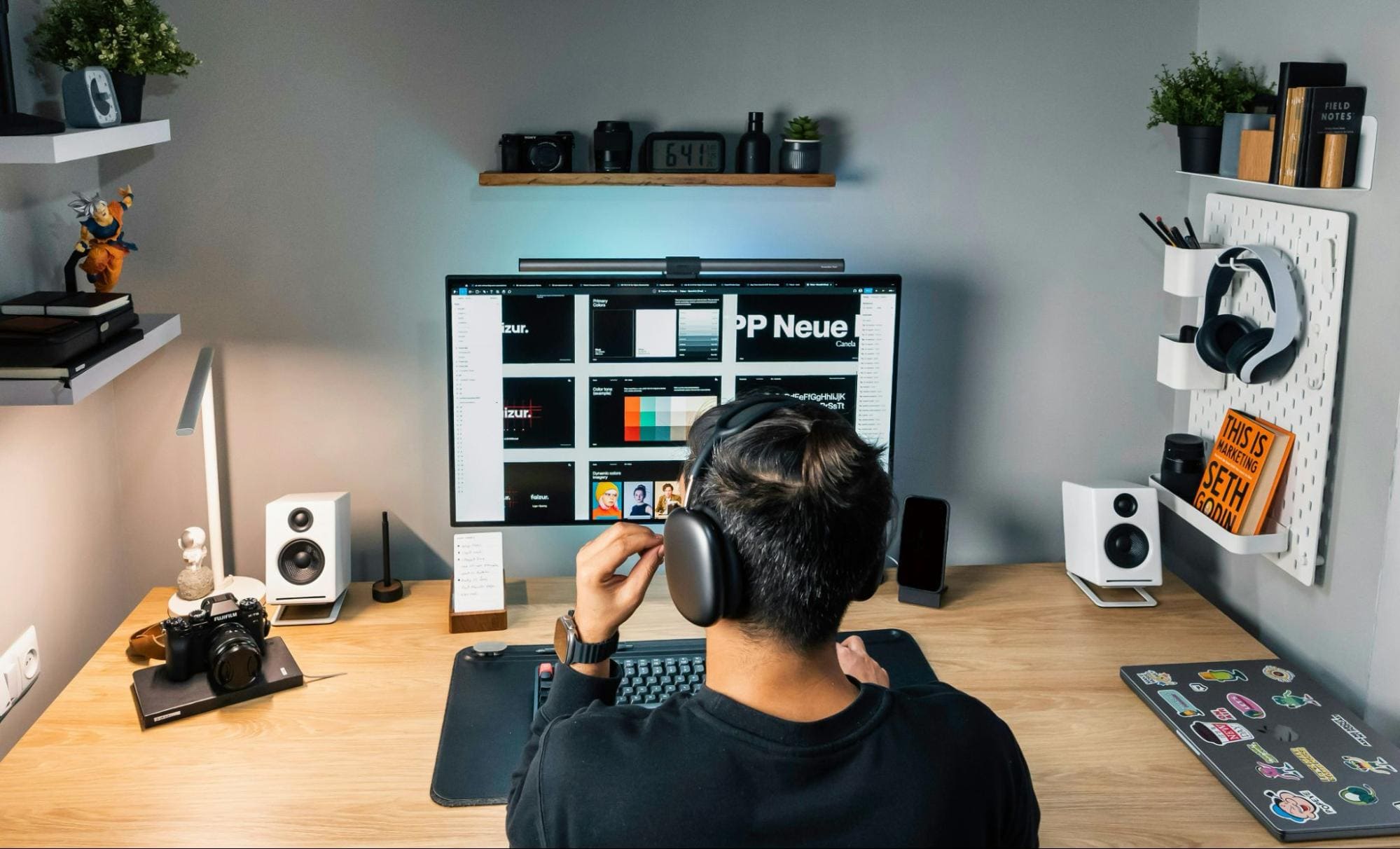You can be employed by a UI UX design company and be satisfied with the money and prospects. However, being self-employed brings you more control over your financial capacity and a work-life balance.
In this guide, you’ll learn the essentials of personal branding. We talk about its benefits and actionable steps. We will arm you with the strategies to position yourself as a sought-after professional in the ui ux services industry.
What Is Personal Branding?
Personal branding means crafting the image of your professional persona in the way you want it to be perceived by the world. During that process, professionals learn to market their skills and experience.
For UX designers, the process of developing personal branding consists of the following key aspects:
| Key Aspect | Examples for UX Designers |
| Intention | – Define a clear career goal (e.g., becoming a specialist in accessibility). – Prioritize the projects that align with your personal brand. |
| Communication | – Create a professional blog on Dribbble or Medium, sharing insights and case studies. – Engage with the UX community on social media platforms like LinkedIn and Twitter. |
| Positioning | – Tailor your resume and LinkedIn profile to reflect your specialized skills. – Network with industry leaders and join relevant UX groups and forums. |
| Authenticity | – Showcase your true design process, including failures and learnings. – Share personal stories and experiences that shaped your UX perspective. |
What Benefits Do UX Designers Get from Personal Branding?
The process of building a personal brand is time-consuming. Especially if you’re already employed and have to dedicate your time for both activities. Let’s look at the key benefits that UI UX service providers get from personal branding:
- You win the competition without even participating. Funny, but at least 70 percent of jobs are not published at all. It’s easier for HRs to ask for personal recommendations instead of combing through 100+ applications. In this context, a well-crafted online presence with a strong portfolio increases your chances of finding a dream job.
- Personal branding fosters connections with other designers and industry influencers. These relationships open doors to new opportunities and collaborations.
- A strong personal brand acts as a magnet for potential clients. They are more likely to reach out to you for your UI/UX services when they see your professional persona.
How to Build Your Personal Brand as a UX Designer
Building a personal brand requires a strategic approach. Here’s a table exploring the steps to help you build your personal brand as a UX designer:
| Step | Description | Tools Needed |
| Think of your unique value proposition | Define your niche. Think of what sets you apart from other designers and focus on that. | Self-reflection and feedback |
| Show your knowledge | Create informative content related to UI UX services. Share your knowledge through blog posts and articles on platforms like Medium or LinkedIn. Participate in design discussions on forums. | Medium, LinkedIn, design forums |
| Create an outstanding portfolio | Show your best work – not necessarily the most beautiful, but the most challenging. Highlight projects that showcase your potential. | Portfolio website (Behance, Dribbble, personal website) |
| Network | Attend industry events, conferences, or online meetups to connect with other UX designers, potential employers, and influencers. | Event platforms (Meetup, Eventbrite), professional social media |
| Personal projects | In addition to your portfolio, work on personal projects that align with your interests. | Design tools (Sketch, Figma), project management tools |
| Be consistent | Maintain a consistent presence online. Regularly update your social media, portfolio, and professional profiles with new content and insights. | Social media scheduling tools, content calendar |
You might be employed at a UI/UX design studio and start performing these stages to build your self-reliance as a designer.
The Final Word
The biggest challenge behind building a brand is time. People quit at the beginning of the journey because they don’t see the rapid growth they were hoping for.
As Master Oogway said, you cannot make a tree bear fruit before its time. The same works with people’s trust and your reputation. Work on your skills, share your wisdom with the audience, and you’ll notice how your name becomes a synonym for quality and reliability.








